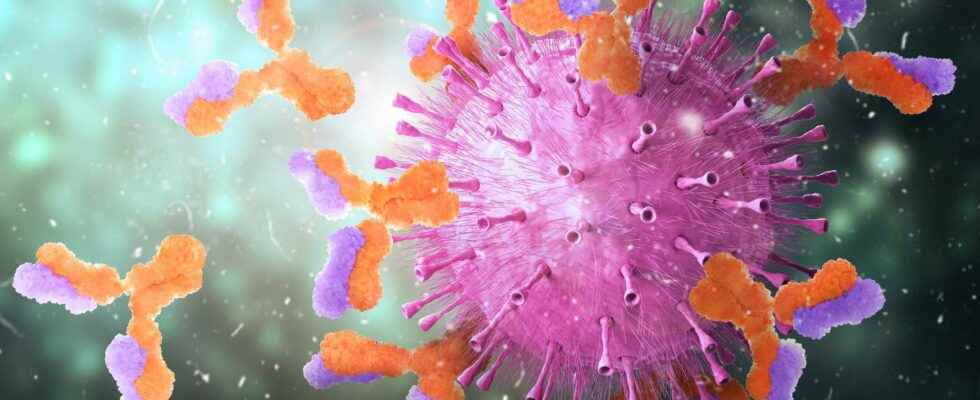If the Covid-19 has left our minds, it has never left the country. Witness the more than 80,000 people infected daily in recent weeks. Testing centers are running at full speed while researchers are still working on how to improve the means of detecting the virus and antibodies. The latest? A skin patch that allows you to do a serological test without needles or blood.
The Covid-19 has never left France since arriving in the territory at the beginning of 2020. For the past few weeks, the variants ofOmicron BA4 and BA5 are circulating actively, bringing with them a seventh vague epidemic. More than 85,000 daily cases (seven-day average) have been recorded; a figure that we had not known since the end of April 2022 and the end of the sixth wave. Mechanically, screening centers running at full speed: every day, more than 300,000 tests are carried out (average over seven days).
Japanese researchers presented in an article Scientific Reports a small device cutaneous to determine the presence or absence ofantibody anti-SARS-CoV-2 without a single drop of blood. This will not replace the PCR which detect the SARS-CoV-2 genome, but could be a complementary test that provides a rapid result on a patient’s serological status. Indeed, the result can be read in three minutes.
Detect anti-SARS-CoV-2 antibodies through the skin
The device looks like a bandage that is stuck on the skin. Scattered with thousands of microscopic porous prickles that pump the liquid dermal interstitial by capillarity. The presence of anti-SARS-CoV-2 antibodies is then determined by an immunochromatographic test. The antibodies present attach themselves to their antigen, the RBD (receptor binding domain). The result, see diagram below, reads like those of the antigen tests to be carried out at home.
If the result is positive for IgM, this indicates a recent infection, of the order of a week, of the patient tested. If the result is positive for both IgM and IgG, the previous infection was one to three weeks ago and if the result is only positive for IgG, the previous infection is old. The sensitivity of the test makes it possible to detect antibody concentrations as low as 3 ng/ml of IgG and 7 ng/ml of Ig M. However, its effectiveness has not been tested. PCR remains the reference technique for detecting Covid-19but if this device meets all the criteria of efficiency and safety, it could be an interesting diagnostic supplement, in particular to identify re-infections of primary infections while avoiding the stress and risks associated with blood sampling .
Interested in what you just read?
